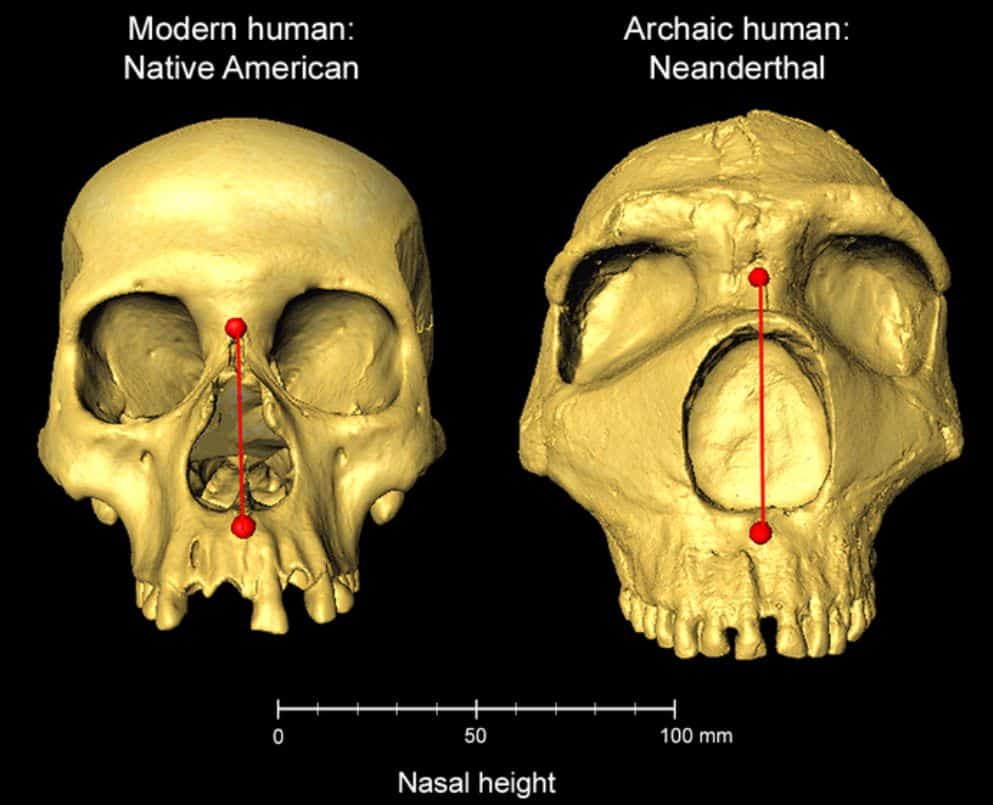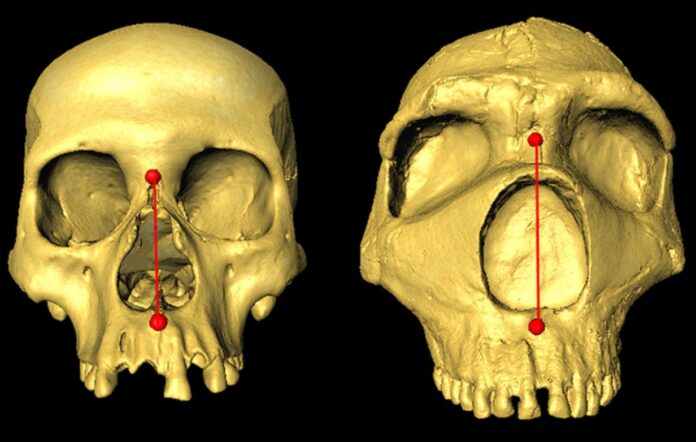Do You Have Increased Nasal Height? You Might Have Inherited This From Neanderthals
A new study led by UCL researchers reveals that humans inherited genetic material from Neanderthals that affects the shape of our noses. The study finds that a particular gene, which leads to a taller nose, may have been the product of natural selection as ancient humans adapted to colder climates after leaving Africa.
A recent study led by researchers at UCL has revealed that our genetic makeup includes material inherited from Neanderthals, which impacts the shape of our noses.
According to the findings published in Communications Biology, a specific gene responsible for a taller nose (top to bottom) may have undergone natural selection as early humans migrated out of Africa and adapted to colder environments.
This research sheds new light on how the evolution of human anatomy has been influenced by our ancient ancestors.
“In the last 15 years, since the Neanderthal genome has been sequenced,” remarks Co-corresponding author Dr. Kaustubh Adhikari, “we have been able to learn that our own ancestors apparently interbred with Neanderthals, leaving us with little bits of their DNA.
“Here, we find that some DNA inherited from Neanderthals influences the shape of our faces. This could have been helpful to our ancestors, as it has been passed down for thousands of generations.”
The study utilized data from over 6,000 volunteers in Latin America who have diverse ancestral backgrounds including European, Native American, and African. The study, called CANDELA, recruited participants from Brazil, Colombia, Chile, Mexico, and Peru.

By comparing the genetic information of these participants to photographs of their faces, the researchers analyzed the distances between specific points on their faces, such as the nose tip or lip edge, to explore how different facial traits are associated with various genetic markers.
The researchers identified 33 genome regions linked to face shape, 26 of which were successfully replicated in comparisons with data from other ethnicities including participants from East Asia, Europe, and Africa.
Researchers found a gene region, known as ATF3, in which individuals with Native American ancestry, as well as those with east Asian ancestry from a different group, inherited genetic material from Neanderthals. This genetic material has been linked to an increase in nasal height. The study also revealed that this specific gene region displays indications of natural selection, indicating that possessing this genetic material was beneficial to those who carried it.
“It has long been speculated that the shape of our noses is determined by natural selection; as our noses can help us to regulate the temperature and humidity of the air we breathe in, different shaped noses may be better suited to different climates that our ancestors lived in,” explains First author Dr. Qing Li.
“The gene we have identified here may have been inherited from Neanderthals to help humans adapt to colder climates as our ancestors moved out of Africa.”
“Most genetic studies of human diversity,” according to Co-corresponding author Professor Andres Ruiz-Linares. “have investigated the genes of Europeans; our study’s diverse sample of Latin American participants broadens the reach of genetic study findings, helping us to better understand the genetics of all humans.”
The discovery is the second time that DNA from ancient people, apart from Homo sapiens, has been shown to influence our facial features. The same team found in a report published in 2021 that a gene affecting lip shape was passed down from the prehistoric Denisovans.
Source: 10.1038/s42003-023-04838-7
Image Credit: Getty
